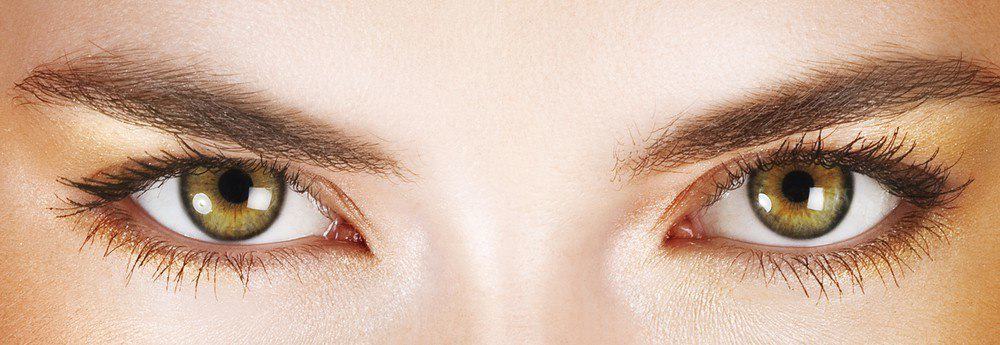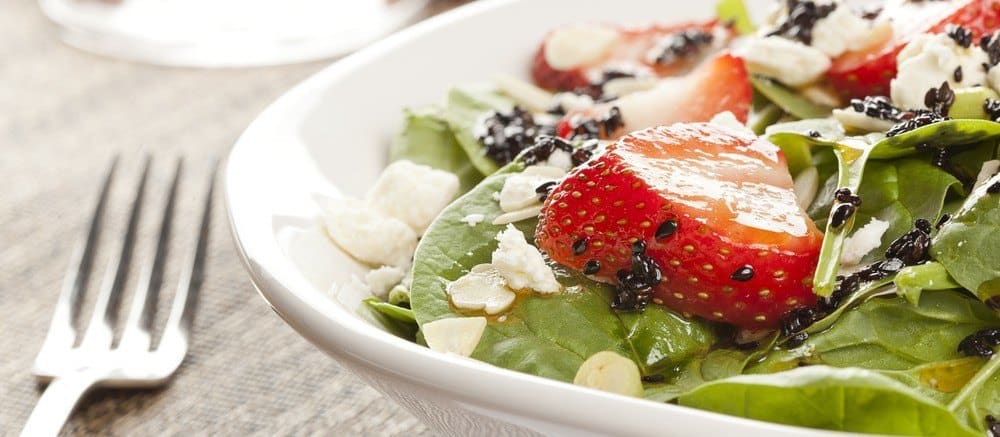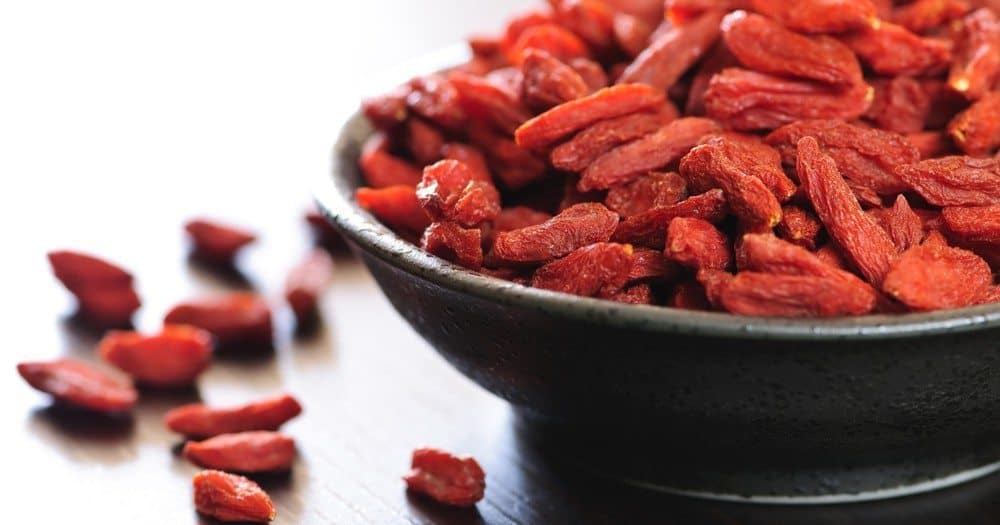
Xanthophylls are plant based phytonutrient pigments with many health benefits. There are several different types of xanthophylls but this page will focus on lutein and zeaxanthin, two of the best antioxidants for eye health and better vision.
How Lutein and Zeaxanthin Protect Your Eyesight
Lutein and zeaxanthin are concentrated in the macula region of your eye where they actually give it its yellow color and protect it from damaging UV light. They also absorb high intensity blue light waves from the visible spectrum. Blue light is a difficult band of light for your eyes to deal with and can cause oxidative damage to the photoreceptor cells of the retina.
In a way, zeaxanthin and lutein are like sunglasses… sunglasses that you eat to put on (a strange analogy I know). The more xanthophyll rich foods in your diet, the more potential protection you are building up for your eyes from UV and high intensity blue light.

ARMD and Lutein and Zeaxanthin
In the highly reflective environments of the towns and cities that most people live in nowadays, we often have harsh light coming at us from all angles. Regular exposure to excessive light can strain and damage your eyes and may contribute to age-related macular degeneration.
ARMD is the principal cause of blindness in the USA for people over 65, with approximately 1.75 million US residents showing symptoms of this disease. This figure is expected to rise to around 3 million by 2020, and almost a third of people over the age of 75 are already affected by ARMD. What’s going wrong with our eyes as we get older?
The macula is the delicate center area of the retina, responsible for focus and fine detail. ARMD is a slow deterioration of the macula cells as we age, leading to a loss of sight in the center of vision and difficulty seeing in bright or dark situations. Those at a higher risk are people who smoke; have a lot of sunlight exposure; have high blood pressure; lighter colored eyes; and those who have a low intake of antioxidants in their diet through vegetables and fruit.
An examination of various studies into the effects of lutein and zeaxanthin on instances of age-related macular degeneration has suggested that a diet high in these two nutrients from food sources may reduce your risk of losing your eyesight to ARMD by up to 40%.

Researchers know that an increase in lutein and zeaxanthin in the diet increases the density of the yellow macula pigment that these two phytonutrients are responsible for. A 2004 study called ‘The Lutein Antioxidant Supplementation Trial’, published in Optometry, showed that lutein supplementation of 10 mg per day over one year, led to measurable improvements in vision and macula pigment ocular density (MPOD is considered a marker of macula health) for patients who already had symptoms of atrophic ARMD.
The authors concluded that, “lutein may play an important role in eye health as a useful bioactive agent in the reducing the risk of ARMD”. It appears very likely that a high intake of lutein and zeaxanthin can significantly reduce your risk of ARMD and keep your eyes healthy and working well for longer.
Lutein and Zeaxanthin Protect Against Cataracts and Glaucoma
Cataracts are opacities formed in the eye’s lens that may be largely due to ultraviolet light and free radical oxidization (smoking, diabetes and some medications are other risk factors). As people get older, the damage to the proteins in the eyes lenses can result in cataracts large enough to block their vision. These can often be removed, but isn’t it better off avoiding them altogether.
Lutein and zeaxanthin are believed to help protect your eyes against cataracts. Several studies have found men and women with a high intake of foods like spinach and other dark green leafy vegetables that are rich in lutein and zeaxanthin, are much less likely to need cataract extraction, or to develop them in the first place.
Glaucoma is an eye disease, usually associated with a buildup of fluid pressure in the eye, where the optic nerve is damaged and vision impaired. Xanthophylls may help prevent glaucoma by protecting the optic nerve from free radical oxidative damage. Low levels of lutein and zeaxanthin in the optic nerve have been suggested as an early symptom of glaucoma.

Zeaxanthin, Lutein and Computer Eye Strain
Anyone who spends a lot of time looking at the computer screen (and isn’t that most of us these days) could likely benefit from a good intake of lutein and zeaxanthin.
A study from China’s Peking University entitled ‘A 12 Week Lutein Supplementation Improves Visual Function in Chinese People with Long-Term Computer Display Light Exposure’, concluded that, “Visual functions in healthy subjects who received the lutein supplementation improved, especially in contrast sensitivity, suggesting that a high intake of lutein may have beneficial effects on the visual performance.”
If working in front of the computer is tiring out your eyes, lutein and zeaxanthin might be able to help.
Our eyes probably aren’t designed to remain focused at such short distances for such long periods. Remember to take regular breaks and look at objects in the distance, and, if possible, shut and rest them for a while. I find rubbing my hands together until they are warm and holding them over my eyes, even for just a minute, really helps relax them.
Lutein and Zeaxanthin Food Sources
Some of the best sources of lutein and zeaxanthin are those dark green leaves you get in mixed salads like spinach, kale, dandelion, chard, chicory, collards, watercress and parsley. Other vegetable sources include bell peppers (especially the orange and red ones), peas, pumpkin, corn, squash, broccoli and brussels sprouts.
Light cooking or steaming veggies can help break down their cell walls to release more of the phytonutrients like lutein and zeaxanthin. It’s also valuable to have some healthy fat in the same meal, like avocado oil or coconut oil, as this has been proven to aid xanthophyll absorption.

Eggs and egg yolks specifically can be a good way to increase your intake of lutein and zeaxanthin. The lutein and zeaxanthin in egg yolks is very bioavailable, even though there isn’t as much in it as some other foods.
Importantly, the chicken that laid the egg should have eaten a diet with lutein and zeaxanthin sources like plants and insects. With that in mind it would make sense that pastured free range eggs would be a much better option than caged eggs and therefore better for your eyes. Eggs are relatively cheap, with free range and organic eggs only a small amount more for a far better product. There is no good excuse to buy inhumane and unhealthy battery farmed eggs.
Other great sources of lutein and zeaxanthin are super foods like goji berries, which are particularly high in zeaxanthin; spirulina, which is very high in zeaxanthin but not lutein; and chlorella, which is higher in lutein. These last two algaes are best taken together anyway as they complement each other so well.
A good intake of vitamin C may increase absorption of both lutein and zeaxanthin. Conversely, Olestra, a fat substitute found in many rubbish snack foods, has been shown to decrease its absorption. Additionally, very high doses of supplemental beta-carotene may outcompete lutein and other carotenoids, leading to lower absorption.
Zeaxanthin and Lutein Supplements and Dosage
There is no recommended daily allowance established lutein or zeaxanthin (these things can take many decades for government departments to get around to). It’s estimated most relatively healthy people consume 1 – 3 mg of lutein at day and only 0.2 – 0.6 mg of zeaxanthin.
Suggested intake of lutein to reduce the risk of ARMD and cataracts starts at 6 mg per day. Most research has been done with at least 10 mg a day, ideally splitting your intake, e.g. 5 mg in the morning and then 5 mg in the evening with a meal.

For those already with age-related macular degeneration, or at a higher risk of ARMD (elderly, particularly women; smokers; lighter colored eyes; and with a low intake of antioxidants), doses of 20 – 30 mg a day of lutein have been used. As with any high doses of supplements, it is best discussed this with a knowledgeable health care professional.
It can also be a sensible idea with any fat-soluble nutrients to take a couple of days off a week. For example, take it for three days, have a day off, repeat. And also, to take a whole week off all supplements occasionally, particularly fat-soluble ones.
Zeaxanthin More Important
Zeaxanthin seems more difficult to get in your diet than lutein as it is usually found in a much lower ratio in our foods, if at all. Supplements too often provide a much lower amount of zeaxanthin than lutein as it is much more expensive to source. Lutein is believed to convert to zeaxanthin in the macula, but some researchers believe that zeaxanthin supplementation may be even more beneficial than lutein.
Zeaxanthin is concentrated in the very center of the macula in our eyes which is responsible for central visual focus and detail. It may be that people who use computers or read for many hours a day could benefit from extra zeaxanthin, beyond the small amounts in the average diet.
Most research on zeaxanthin’s beneficial properties for the eyes has been with intakes of at least 3 mg a day, many with 6 mg and some with as high as 10 mg. It would be difficult to get this amount of zeaxanthin in your diet, perhaps with the exception of goji berries, which are particularly high in zeaxanthin.
If you think you could benefit from a natural xanthophyll supplement, look for one with a high zeaxanthin content. These are more worth paying for than a high lutein supplement, that may list zeaxanthin as an ingredient, but in reality it’s only a low dose byproduct of the way they sources of the lutein.
Another good option to increase your lutein and zeaxanthin intake are nutritious goji berries, spirulina and chlorella. These have numerous other health benefits and are a far better choice than most lab engineered multivitamins.

Healthier Eyes and Better Vision
No negative effects have been observed with high intakes of lutein and zeaxanthin from natural sources, and the conclusion of the Joint Expert Committee for Food Additives at the World Health Organization was that the use of lutein and zeaxanthin was safe, even at much higher dosages than mentioned here. That said, it would seem better to have a mixture of antioxidants for eye health like xanthophylls in your diet as they seem to work synergistically to provide all their health benefits.
A high zeaxanthin xanthophyll supplement could help protect and even improve your vision, especially if you spend a lot of time focusing on computer screens. Another simple step is to start eating more vegetables and fruits with yellow and orange pigments and more dark green leafy vegetables. Your eyes will thank you for it.
Leave a comment